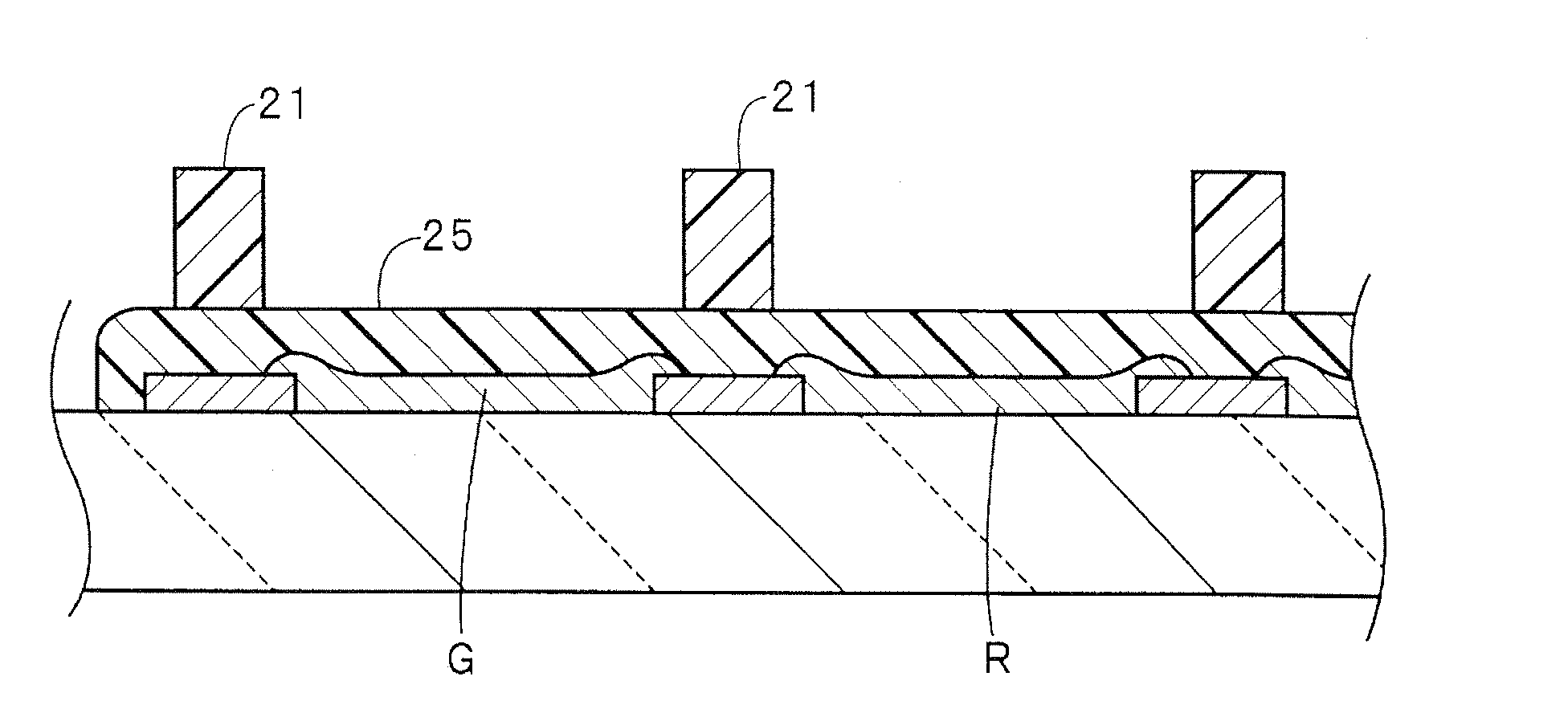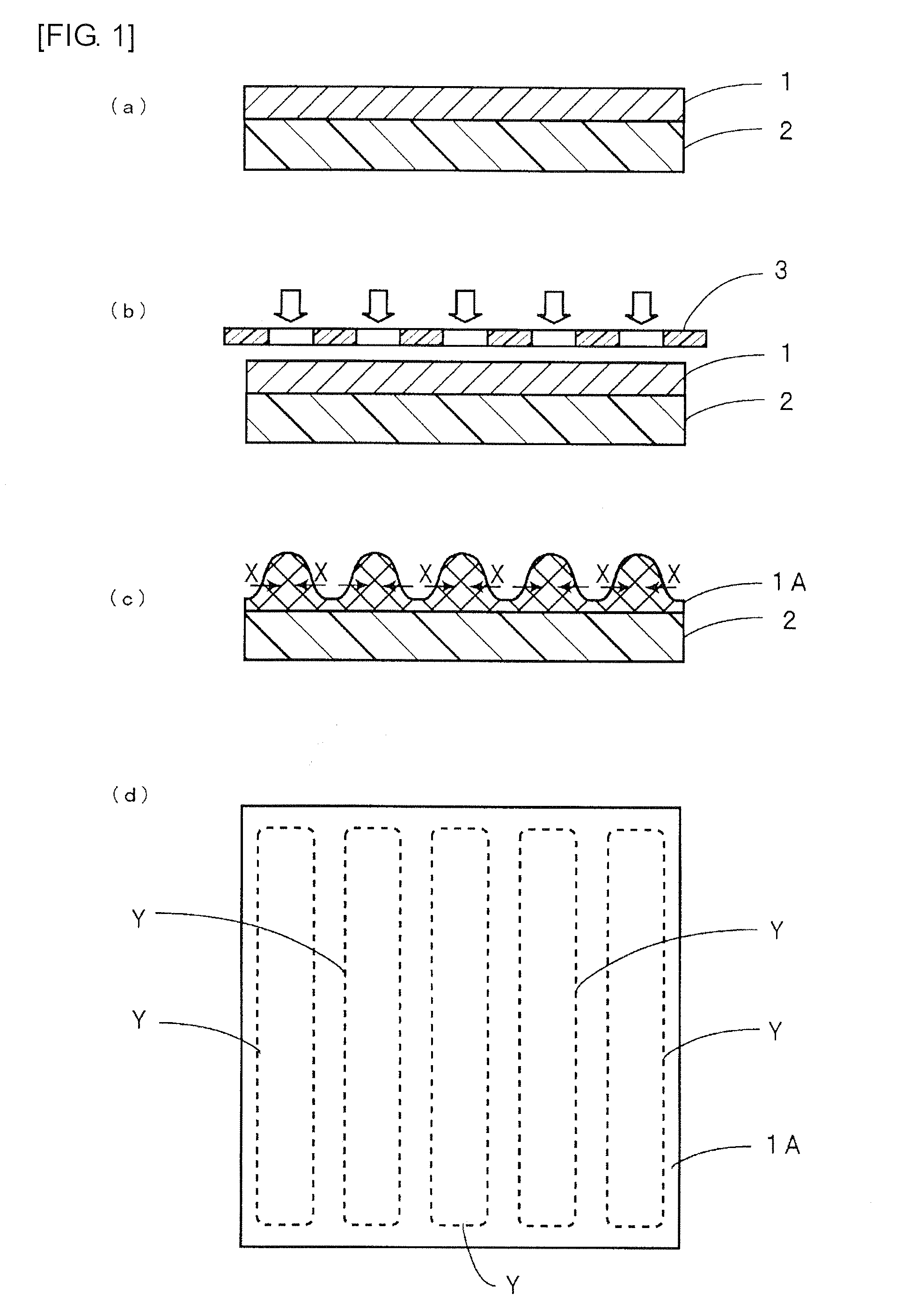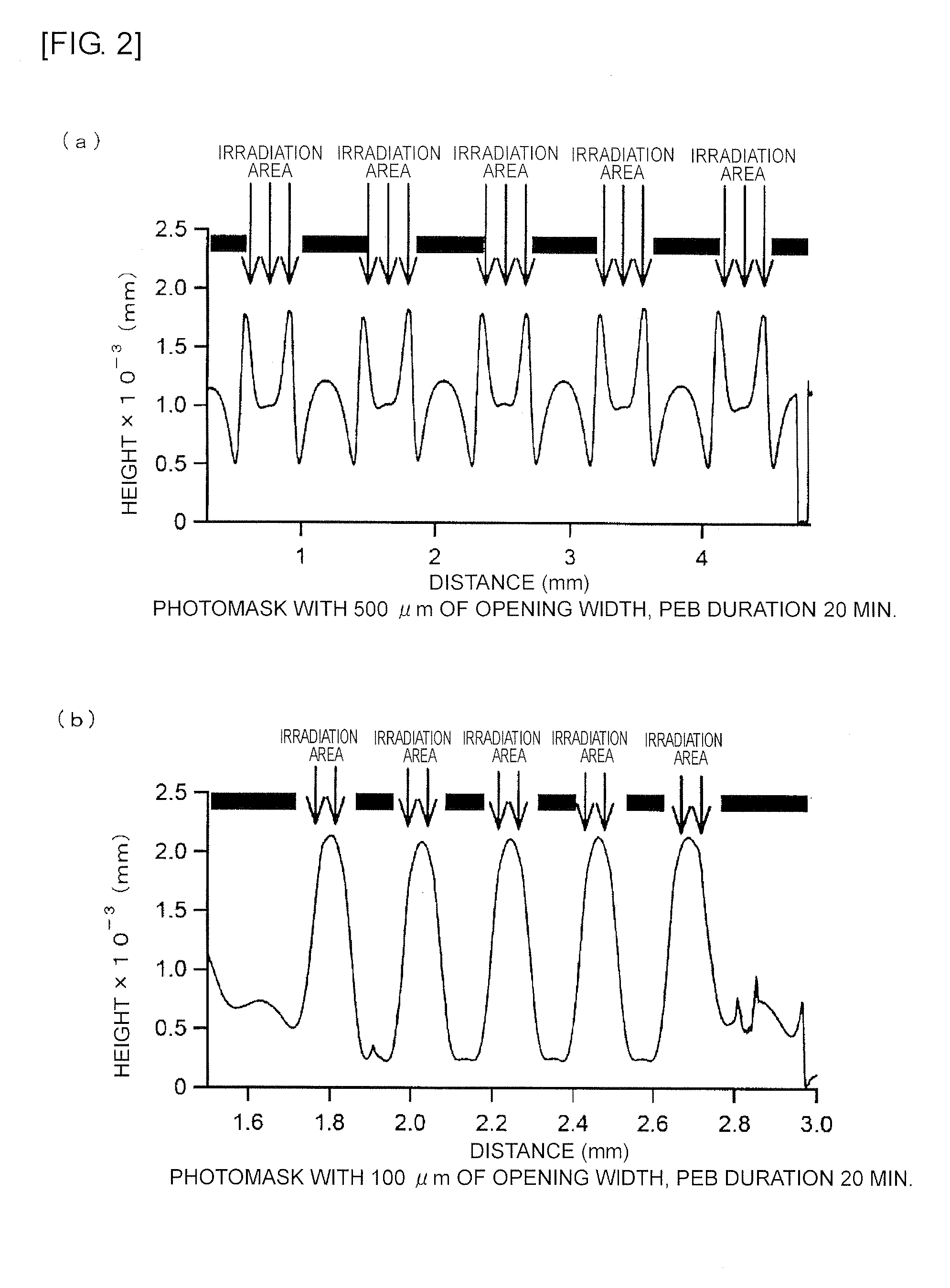Process for producing patterned film and photosensitive resin composition
a resin composition and patterned film technology, applied in the field of process for producing patterned film and photosensitive resin composition, can solve the problem of uncured photosensitive resin composition layer in unexposed area, and achieve the effect of reducing the amount of photosensitive resin composition, reducing the environmental load, and eliminating preparation
- Summary
- Abstract
- Description
- Claims
- Application Information
AI Technical Summary
Benefits of technology
Problems solved by technology
Method used
Image
Examples
example 1
[0262]A novolak epoxy oligomer (YDCN-701) 100 parts by weight, represented with the above-described formula (3); a photobase generator (PBG) 10 parts by weight, represented with the above-described formula (1); and a base proliferating agent 45 parts by weight, represented with the above-described formula (5) were dissolved in a solvent having a composition of PEGMEA (propylene glycol-1-monomethyl ether-2-acetate): CHCl3=4:5 (weight ratio) 900 parts by weight, and thus a photosensitive resin composition A was obtained.
[0263]Next, the above-described photosensitive resin composition A was spin cast over 30 seconds at a number of rotations of 1000 rpm on a substrate, and subsequently, was heated for 1 minute on a hot plate at 100° C. to form a photosensitive resin composition layer having a film thickness of 1170 nm.
[0264]Next, a photomask as illustrated in FIG. 1 (b) were prepared, in detail: a photomask 3A having linearly formed openings with 500 μm and areas without opening with 50...
example 2
[0268]After the selective exposure of the photosensitive resin composition layer, the same process as that in Example 1 was repeated to obtain patterned films, except for duration of the PEB treatment having been changed to 5 minutes, 7 minutes, 10 minutes, 15 minutes, or 20 minutes.
[0269]The patterned films obtained by the PEB treatment for 5 minutes, 7 minutes, 10 minutes, 15 minutes, or 20 minutes (the same as in Example 1) using the photomask 3A or the photomask 3B were measured for the height profile, using a surface roughness meter. FIGS. 3 (a) to (e) illustrate the height profiles of the patterned films obtained using the photomask 3A, respectively, and FIGS. 4 (a) to (e) illustrate the height profile of the patterned film obtained using the photomask 3B, respectively.
[0270]As illustrated in FIGS. 3 (a) to (e) and FIGS. 4 (a) to (e), at least a part of the photosensitive resin composition in the unexposed area shifted to the exposed area to form the patterning image. Furtherm...
example 3
[0272]The same process as that in Example 1 was repeated to prepare a photosensitive resin composition B, except for having changed the mixed amount of the novolak epoxy oligomer (YDCN-701) into 100 parts by weight, and having changed the composition of the solvent into PEGMEA (propylene glycol 1-monomethyl-ether-2-acetate): CHCl3=9:10 (weight ratio) and the amount into 1900 parts by weight. The same process as that in Example 1 was repeated to prepare a photosensitive resin composition C, except for having changed the mixed amount of the novolak epoxy oligomer (YDCN-701) into 100 parts by weight, and having changed the composition of the solvent into PEGMEA (propylene glycol 1-monomethyl-ether-2-acetate): CHCl3=3:5 (weight ratio), and the amount into 400 parts by weight.
[0273]Next, each photosensitive resin compositions Band C were spin cast over 30 seconds, respectively, at number of rotations of 1000 rpm on a substrate. Subsequently, each resin composition was dried for 1 minute ...
PUM
| Property | Measurement | Unit |
|---|---|---|
| width | aaaaa | aaaaa |
| width | aaaaa | aaaaa |
| thickness | aaaaa | aaaaa |
Abstract
Description
Claims
Application Information
 Login to View More
Login to View More - R&D
- Intellectual Property
- Life Sciences
- Materials
- Tech Scout
- Unparalleled Data Quality
- Higher Quality Content
- 60% Fewer Hallucinations
Browse by: Latest US Patents, China's latest patents, Technical Efficacy Thesaurus, Application Domain, Technology Topic, Popular Technical Reports.
© 2025 PatSnap. All rights reserved.Legal|Privacy policy|Modern Slavery Act Transparency Statement|Sitemap|About US| Contact US: help@patsnap.com



